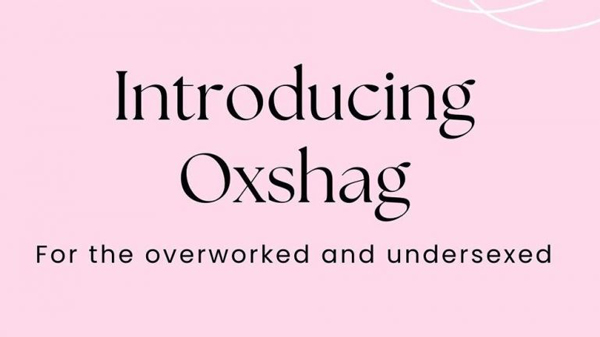Undersexed and overworked: Why Oxford University’s dating app OxShag was recently shut down
From Bumble and Tinder to Hinge and Raya, it’s safe to say that singletons love dating apps. For most of us looking for a partner, more than one and anything in between, they have become the most convenient way to ‘get to work’.
We can only assume that the Oxford University student—whose name is yet to be revealed and is only known as the ‘OxShagger’—who created ‘OxShag’, a website designed to “spice up the Oxford casual sex scene which is currently underwhelming.”
The site allowed students and staff members alike to select other students or staff at the university that they wanted to “shag” all while hiding behind a computer screen. Eventual matches were only to be revealed on this year’s Valentine’s Day, Tuesday 14 February 2023.
Unfortunately for the OxShagger however, the platform stayed live for less than a week before it was taken down due to a data breach. To put it simply, the website worked on an opt-in basis, not an opt-out. This in turn meant that every student and staff member from Oxford University—aka one of the UK’s most prestigious universities—had their private information divulged for the rest of OxShag’s users to see.
Ever since the Facebook-Cambridge Analytica scandal—and many more times since then—data privacy has been a huge conversation, for good reason. But it seems the OxShagger didn’t learn from Meta’s mistakes.
When it launched on Saturday 7 January, the site asked students to enter their university email address before being allowed to select a list of any 20 staff or students at the university who they wished to have a “casual shag” with. Using the school’s internal email system, the platform’s founder was able to collect every student and staff member’s name and display them on OxShag without their knowledge or consent.
If those who were invited onto the platform wished to join it, curious enough to see who had matched with them, they only had to pay a £3 fee. But the manner in which the OxShagger had used the university’s email system to access and spread personal details about uninformed individuals inevitably led to their website’s ban.
Once OxShag was brought to the university’s attention for misusing its internal IT database, it was the beginning of the end for the short-lived dating platform.

Defending themself to The Tab, OxShagger claimed that Oxford students’ names and colleges can be found anywhere on the internet. Despite saying they do apologise for the inclusion of students’ personal details and admitting they “fucked up,” the creator added that it has “been blown massively out of proportion” and that people need to “loosen up a bit.”
“Like seriously, it’s your name and college! The site was only up for a few hours and the data that was available was seriously unlikely to cause any harm,” the OxShagger continued.
After receiving numerous complaints, they did try to ‘rectify’ their mistake by reworking the website to enable users to opt-in for their names to be listed as well as lowering the entry fee to £1 instead of £3. Still, the damage had already been done.
Among the countless angry comments left by students on Oxford blue, one stated: “As a victim of domestic violence who goes by a new name which has not yet been updated in my university email, I am terrified at the prospect that my abuser could easily find this and trace me to my college.”
Another went on to say: “Upsetting is putting it lightly. It feels violating to be sucked into a strange sex game without any knowledge of it beforehand; the lines crossed here are astounding. Not only was consent not sought prior to the site going up, but it is also publicly available, proving worrying for safety reasons. The original caption to their Instagram post was pushing for a progressive, sex-positive stance against ‘conservatism’, but there is nothing more progressive than respecting people’s boundaries, especially when it comes to being sexualised unwittingly. Cultural, religious and purely personal reasons are all valid. At university level, I thought we had progressed beyond these demeaning sexual power plays, especially at a university like Oxford.”
Despite efforts from the creator to make the site palatable to all, Monday 9 January saw the complete deletion of the website along with confirmation from the student behind it that it would not be running this term. “At the beginning of next term, after a period of reflection (and some more resoundingly mediocre casual sex), I hope attitudes will have changed and I will poll the community to see if people would like me to give this another crack,” the OxShagger revealed. Time will only tell if Oxford University students are willing to put their faith back into the slightly shady shagging site.





